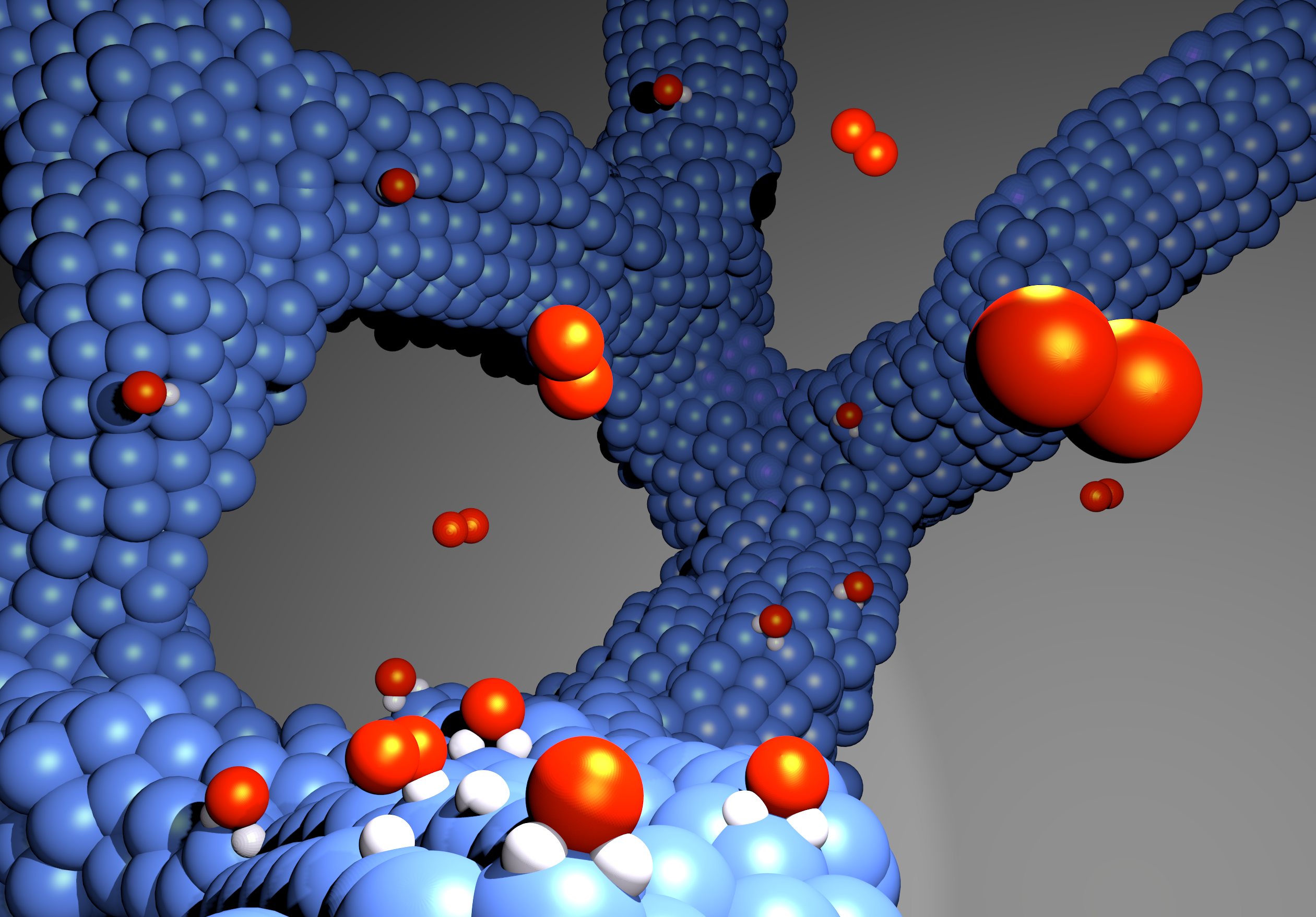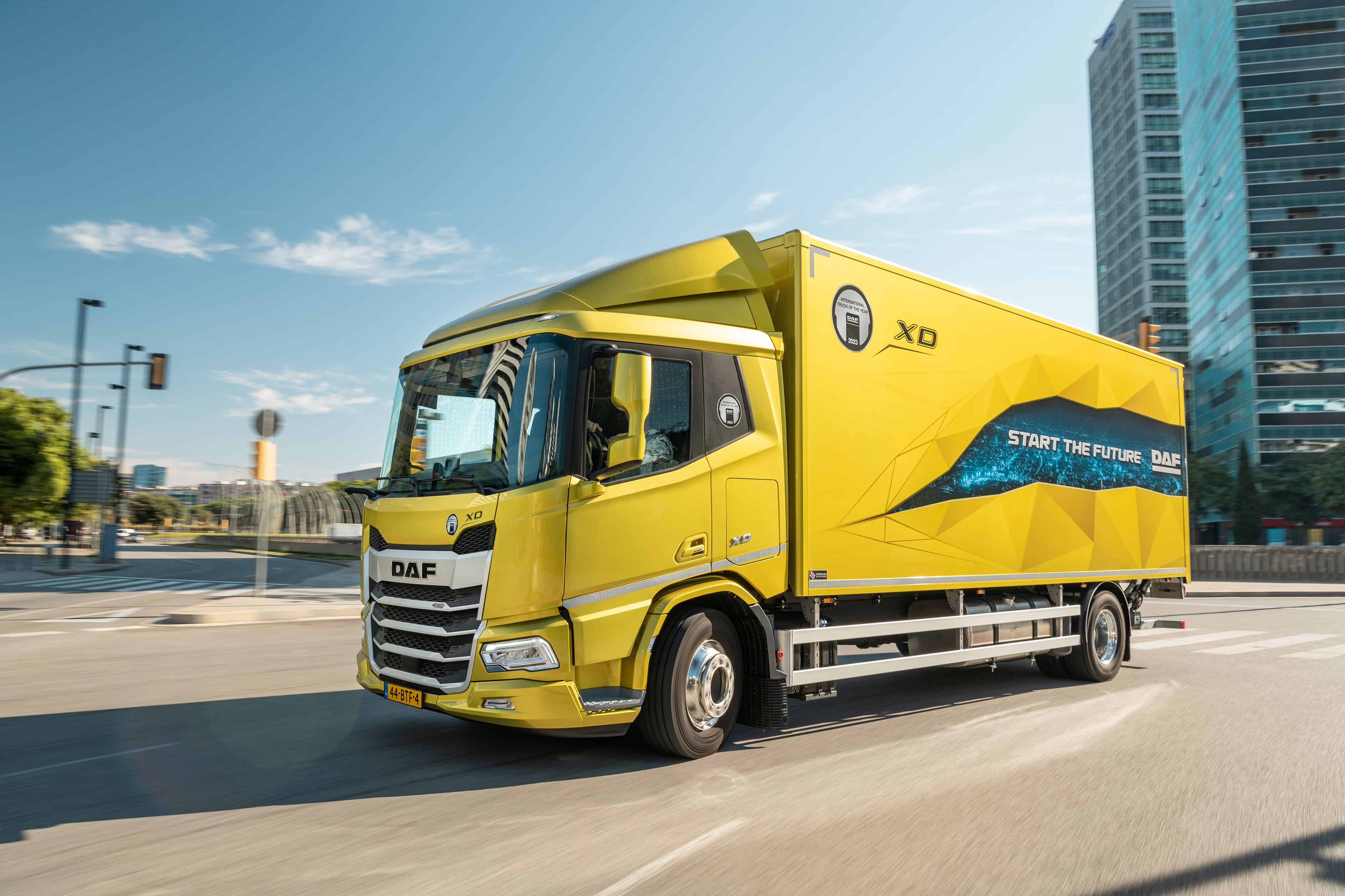
In electromobility – especially where heavy goods transport is concerned – fuel cells are nowadays increasingly catching up with pure battery drives. However, fuel cells do need an electrocatalyst capable of enhancing the electrochemical reaction which generates electricity.
A catalyst must have a surface with very small platinum-cobalt particles (in the nanometer range) that is applied to a conductive carbon carrier material so that it can be used in a fuel cell. However, these small particles and also the carbon in the fuel cell corrode over time, causing the cell to lose its efficiency and stability.
An international team of researchers led by Professor Matthias Arenz from the Department of Chemistry and Biochemistry (DCB) at the University of Bern (Switzerland), has now been able to develop an electrocatalyst which no longer needs a carbon carrier by using a special process. Unlike existing catalysts, this electrocatalyst is made up of a thin metal grid and is, therefore, more durable. “The catalyst we have developed is extremely powerful and promises stable fuel cell performance even at higher temperatures and with high current density,” Matthias Arenz explains.
Smaller surface – lower output
Electrical current is generated in a hydrogen fuel cell by using an electrode to split hydrogen into positively-charged protons and negatively-charged electrons. The electrons then flow along the electrode. They subsequently generate an electric current outside the cell, which drives e.g. a motor. The protons react with oxygen from the air on the other side of a special membrane that is on a second electrode which has a catalyst applied to it. This is where the water vapor is produced, which is then discharged through the exhaust pipe. Both electrodes must be coated with a catalyst in order to generate electricity. Otherwise, the chemical reactions would take place very slowly – and this is particularly true of the second one, the oxygen electrode.
But the catalyst’s platinum-cobalt nanoparticles can ‘melt’ together when a vehicle is driven, reducing the catalyst’s surface area and ultimately the fuel cell’s performance.
Furthermore, the carbon that is used to fasten the catalyst may corrode when used in road traffic. This, in turn, results in a shorter service life for the fuel cell and also for the vehicle. “Hence our motivation to produce an electrocatalyst without a carbon carrier that is still capable of high levels of performance,” Matthias Arenz adds.
So far, other similar catalysts without a carrier material have always had a smaller surface area. However, since the size of the surface area is decisive for the functionality of the catalyst, and as such its performance, industrial use was out of the question up until now.
Thanks to ‘sputtering’ for a longer life span
The researchers were able to realize their idea thanks to a special process, cathode sputtering. In this method, individual atoms of a material ( in this case, platinum or cobalt) are ejected (sputtered) by being bombarded with ions. The released gaseous atoms would then condense down to an adhesive layer.
“A very porous structure can be achieved with the special sputter process and successive treatment, which gives the catalyst a large surface area and is simultaneously self-supporting. A carbon carrier is no longer required as a result,” says Dr. Gustav Sievers, first author of the study from the German Leibniz Institute for Plasma Research and Technology.
“This technology is industrially scalable and can therefore also be used for high-volume production, for example in the automotive industry,” Matthias Arenz states.
The process will enable the hydrogen fuel cell to be further optimized for use in road transport. “Consequently, our findings are key to the further development of sustainable energy use, especially in view of the current developments in the mobility sector for heavy goods transport.”
This involves an international collaboration between the DCB, the University of Copenhagen, and the Leibniz Institute for Plasma Science and Technology, among others, which has also made use of the facilities of the Swiss Light Source (SLS) at the Paul Scherrer Institute. The study was financed by the Swiss National Science Foundation (SNSF), the German Federal Ministry of Education and Research (BMBF), and the Danish National Research Foundation Center for High-Entropy Alloy Catalysis.
The scientists have published the results of their study in the journal Nature Materials.
Title picture: The new electrocatalyst for hydrogen fuel cells consists of a thin platinum-cobalt alloy grid and, unlike the catalysts commonly used today, does not require a carbon carrier. © Gustav Sievers







